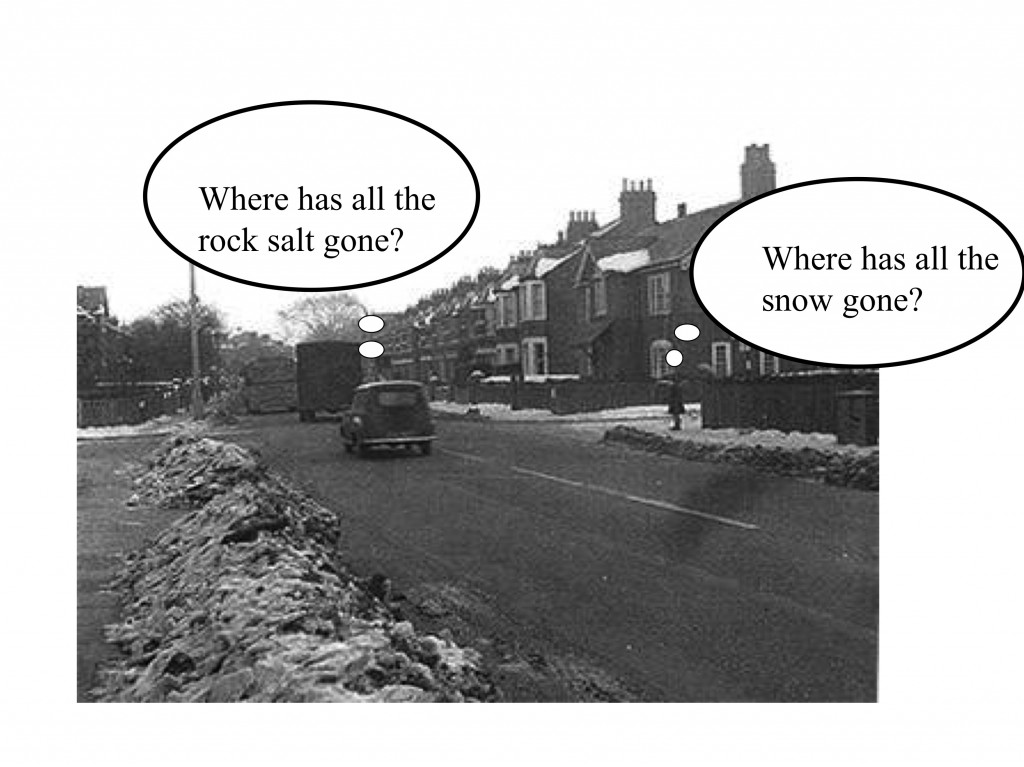Chemical solutions and dissolving teaching resources
Worksheets and lesson ideas to challenge students aged 11 to 16 to think hard about solutions and dissolving (GCSE and Key Stage 3)
Overview: when you add salt to water the salt disappears. At least that is what appears to happen. But of course we know that the salt does not disappear, rather it forms interactions with the water particles and breaks up into smaller particles that cannot be seen forming a solution. A solution is just a mixture. The mass of the solute and solvent will equal the mass of the solution. It still fascinates me that temperatures exceeding 800 ºC are required to melt salt and yet salt will dissolve at room temperature. Both processes involve breaking the same strong ionic bonds; it doesn’t seem logical! The answer lies in the fact that when the solute particles form interactions with the water particles – energy is released, and it is this energy that powers the endothermic bond breaking process – how great is that!
Key concept: when a solute dissolves in a solvent to form a solution the mass is conserved.
From big idea: All matter in the Universe is made of very small particles
Linked knowledge: particles, separating techniques, energy changes
Misconception [scientific idea]: when a solute dissolves the mass of the solute is lost [the mass of the solute is conserved when it dissolves]; the solute changes from a solid to a liquid when it dissolves [the solute lumps become smaller but particles are still in a solid arrangement – this is the aqueous phase]; the solvent is not made up of particles [the solute and the solvent are made up of particles].
Teaching resources
Where to start?
Start by dissolving salt in a large beaker of water – for dramatic effect the bigger the better! Pose the question ‘where has the salt gone?’. Ask students to draw a picture to explain where the salt has gone as this will reveal their prior knowledge. You could suggest how they could prove that the salt has not disappeared. Now repeat, but this time using oil instead of water. This can then serve as a great opportunity to introduce the terms solute, solvent, solution, soluble and insoluble.
Key words when teaching solutions
One of the things that makes solutions a difficult topic for students is the shear number of new words they need to learn. Check out our pages on reading and teaching vocabulary.
Particle pictures
Ask students to draw particle pictures for a variety of situations. You could provide them with the outline of a beaker as a starting point, but point out that the beaker and air around it are also made of particles!
- salt in water
- salt in oil
- sand in water
- ethanol in water
What does solute concentration mean?
 KS3 starter activity on chemical solutions and concentration. Students are challenged to think deeply about what the term concentration means. They use the terms solute, solvent and solution to consider which solution has the highest concentration. (PDF)
KS3 starter activity on chemical solutions and concentration. Students are challenged to think deeply about what the term concentration means. They use the terms solute, solvent and solution to consider which solution has the highest concentration. (PDF)
Saturated solution
This is a lovely demonstration to show what happens when a supersaturated solution of sodium ethanoate crystallises.
Comparing dissolving and melting
KS3/GCSE thinking tasks looking at the similarities and differences between dissolving and melting. This discussion activity encourages deep thinking about two very familiar processes: dissolving and melting. Although both processes seem very different, they both involve breaking bonds. However, the energy required to break these bonds have very different origins. (PDF)
Key Stage 3 question comparing snow melting and salt dissolving. Students discuss what happens to rock salt and snow in winter. The discussion will hopefully lead students to understand the difference between melting and dissolving. (PDF)
Thinking deeper
- Temperatures exceeding 800 ºC are required to melt salt and yet salt will dissolve in water at room temperature.
- Compare and contrast melting with dissolving.
- Explain the importance to living organisms of water being a good solvent.
Further reading
- Johnston, K. and Scott, P., 1991. Diagnostic teaching in the science classroom: Teaching/learning strategies to promote development in understanding about conservation of mass on dissolving. Research in Science & Technological Education, 9(2), pp.193-212.
- Particle pictures and the particle model
- Particles and gas pressure
- Diffusion
- Elements mixtures and compounds
- Separating techniques
- Solutions
- Density
